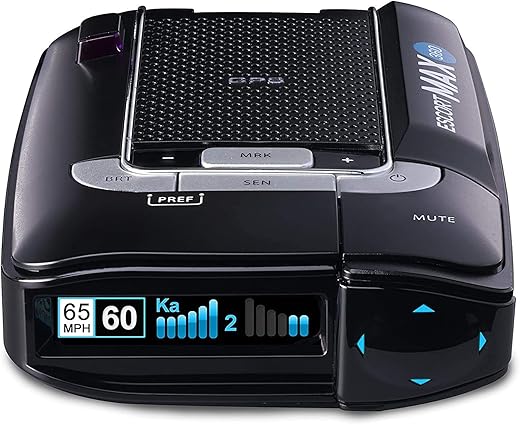









Understanding Antenna Gain Specifications in Radar Detectors
Radar detectors have become an essential tool for many drivers, offering an extra layer of protection against speed traps and traffic enforcement. One of the key specifications that often confuses consumers is antenna gain. But what exactly does antenna gain mean, and how does it affect the performance of your radar detector? In this article, we will break down the concept of antenna gain, helping you make an informed decision when choosing the right radar detector for your needs.
What is Antenna Gain?
Antenna gain is a measure of how effectively an antenna can direct radio frequency (RF) energy in a particular direction. You can think of it like a flashlight: a regular flashlight spreads light in all directions, while a focused beam flashlight illuminates a specific area much more intensely. Similarly, a radar detector with a high antenna gain can pick up signals from farther away or in more challenging conditions than one with a lower gain.
Simply put, antenna gain is expressed in decibels (dB), and a higher dB rating typically indicates better performance. However, it’s essential to remember that gain does not equate to sensitivity; it merely refers to the directionality and focus of the antenna.
Why Does Antenna Gain Matter?
When you’re driving down the highway, the last thing you want is to be caught off guard by a hidden speed trap. A radar detector with a high antenna gain can help you detect radar signals from a greater distance, allowing you more time to react. This is particularly beneficial in areas with rolling hills or dense trees, where radar signals might be obstructed.
But why should you care about the specifications? Well, understanding antenna gain can make the difference between a radar detector that alerts you in time and one that leaves you scrambling to slow down.
Types of Antenna Gain
There are two primary types of antenna gain: isotropic gain and directional gain.
– **Isotropic Gain**: This is a theoretical measurement that assumes the antenna radiates energy uniformly in all directions. While it provides a baseline for understanding gain, it doesn’t reflect real-world performance.
– **Directional Gain**: This is the practical measurement that shows how well an antenna can focus its energy in a specific direction. Most radar detectors utilize directional antennas, which concentrate the radar waves towards the source of the signal, enhancing detection capabilities.
How Antenna Gain Affects Radar Detection
Understanding the relationship between antenna gain and detection is crucial. Higher gain antennas can pick up weaker signals that lower gain antennas might miss. For example, if you’re driving in an area where police radar is used but the signal is weak due to distance or interference, a high-gain antenna can still alert you to the presence of radar.
Conversely, if an antenna has low gain, it might only detect strong signals from nearby radar units, leaving you vulnerable to distant threats. In this sense, antenna gain can be likened to the difference between hearing a whisper and hearing a shout; the better your ears (or antenna), the more likely you are to catch important information.
Practical Considerations When Choosing a Radar Detector
When selecting a radar detector, consider the following factors related to antenna gain:
1. **Driving Environment**: If you frequently drive in urban areas with lots of interference, a detector with high antenna gain can help you filter out the noise and focus on the signals that matter.
2. **Detection Range**: Look for models that specify their antenna gain. A detector with a gain of +5 dB is generally more effective than one with a gain of 0 dB in terms of distance.
3. **User Reviews**: Real-world experiences can provide insights into how well a radar detector performs under various conditions. Pay attention to reviews that mention detection range and reliability.
4. **Price vs. Performance**: Higher gain antennas often come with a higher price tag. Assess your budget and determine how much you’re willing to invest in a detector that meets your needs.
Conclusion
In summary, understanding antenna gain specifications in radar detectors is crucial for making an informed purchase. A higher antenna gain can enhance your radar detector’s ability to pick up signals from greater distances, providing you with more time to react to potential speed traps. By considering the driving environment and user reviews, you can find a radar detector that balances performance and cost effectively.
FAQs
1. Does a higher antenna gain always mean better detection?
Not necessarily. While a higher gain can enhance detection range, other factors like sensitivity, signal processing, and design also play important roles in overall performance.
2. Can I improve my radar detector’s performance?
In some cases, you can improve performance by adjusting the positioning of the detector or ensuring it is mounted in a location with minimal obstruction.
3. How can I tell if a radar detector has a good antenna gain?
Check the product specifications, look for user reviews, and compare the dB ratings with other models to gauge their performance in real-world conditions.
